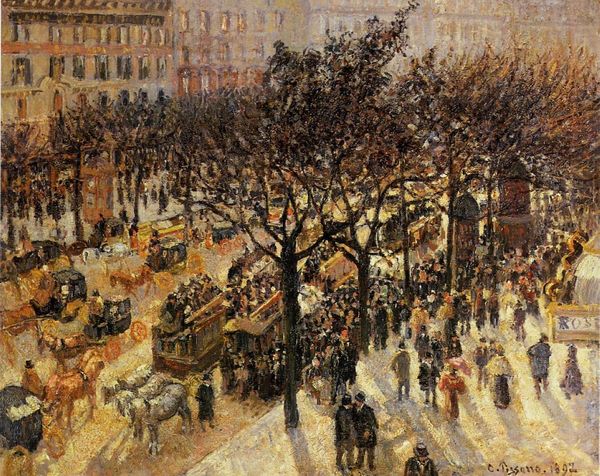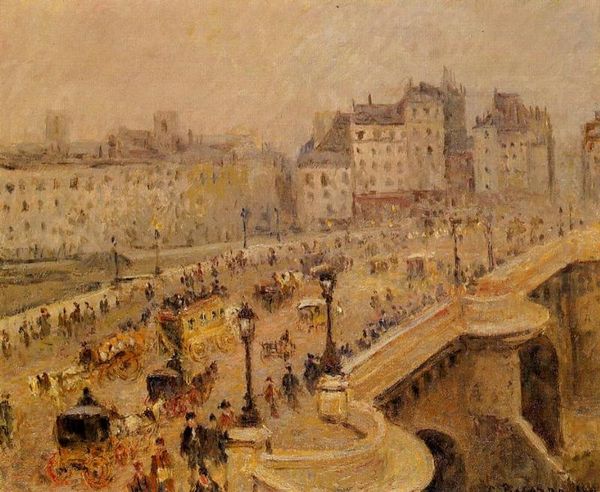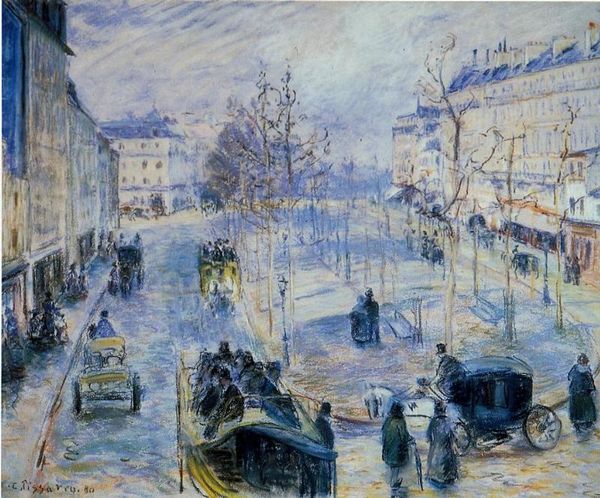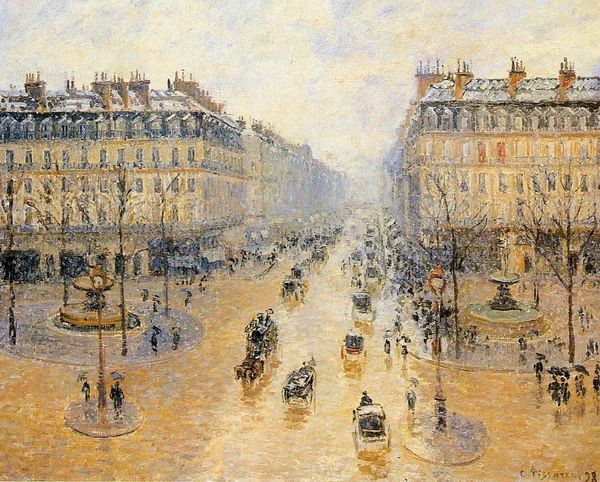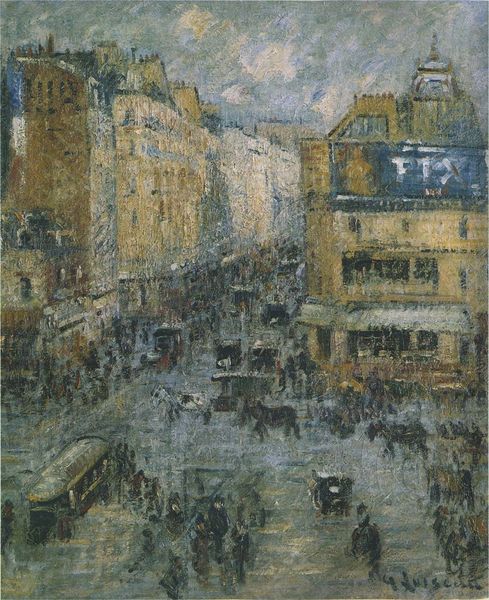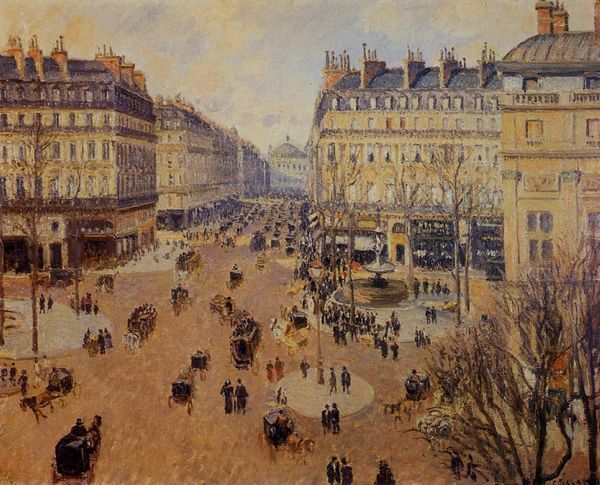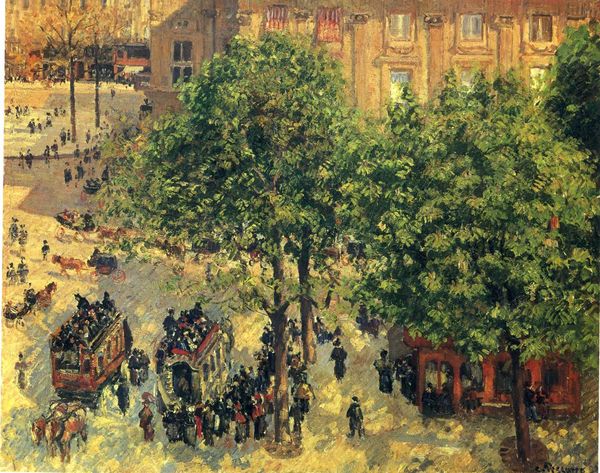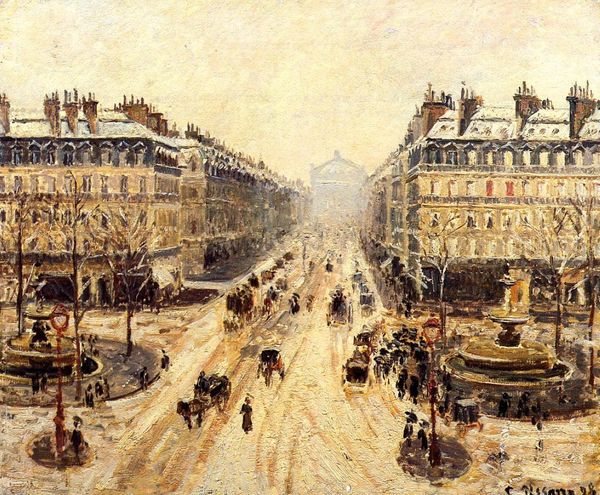
Dimensions: 33 x 41 cm
Copyright: Public domain
Curator: This is Camille Pissarro's "Place du Havre, Paris," painted in 1897. An oil painting currently held in a private collection. Editor: My first thought? Bustling. Chaotic, even. A symphony of grey and brown, punctuated by flashes of light reflecting off wet cobblestones. Curator: Absolutely, and this wasn't just any place, but the Place du Havre, now Place Gabriel Péri, in Paris, teeming with horse-drawn carriages and pedestrians in late 19th century finery. It's Pissarro's testament to modernity and movement. The symbols are very intriguing. Look at how umbrellas function not just as weather protection but as personal shields, reflecting a self-conscious urbanity. Editor: Precisely, but think about what this kind of elevated view implies. Pissarro painted this from a hotel window; the painting, in essence, comes out of Haussmannization. This viewpoint becomes a symbol of modernity, but the working class down below are lost within it. Their humanity is stripped away, a simple dark patch. Curator: Yes, you can see how Pissarro builds the scene with tiny, distinct strokes. They give a blurred feel like you're seeing the scene through the rain-flecked window. It's impressionism working at its finest. It reflects on an emotional state, this momentariness and feeling like time is running too fast, but how this contributes to a more generalized feeling across a city or area. Editor: True, this blur emphasizes the transience and constant change reshaping Parisian life. Pissarro doesn’t romanticize city life; it presents a cool-eyed assessment of urban existence, hinting at both the marvel and the alienation it fostered. And his works themselves participated in a bourgeoning commercial market for art. The elite are the audience, looking down upon this scene. Curator: Looking back on this work now, it strikes me as more than just an impression of a place. Pissarro manages to catch an entire world. His viewpoint and the symbols it produces leave you to contemplate and feel a whole city. Editor: And what it was becoming. In the face of industrialization and mass production of culture, what remains is a feeling that perhaps Paris would only exist as memories, even then.
Comments
No comments
Be the first to comment and join the conversation on the ultimate creative platform.

